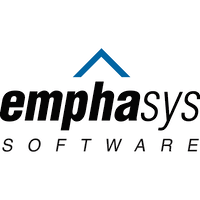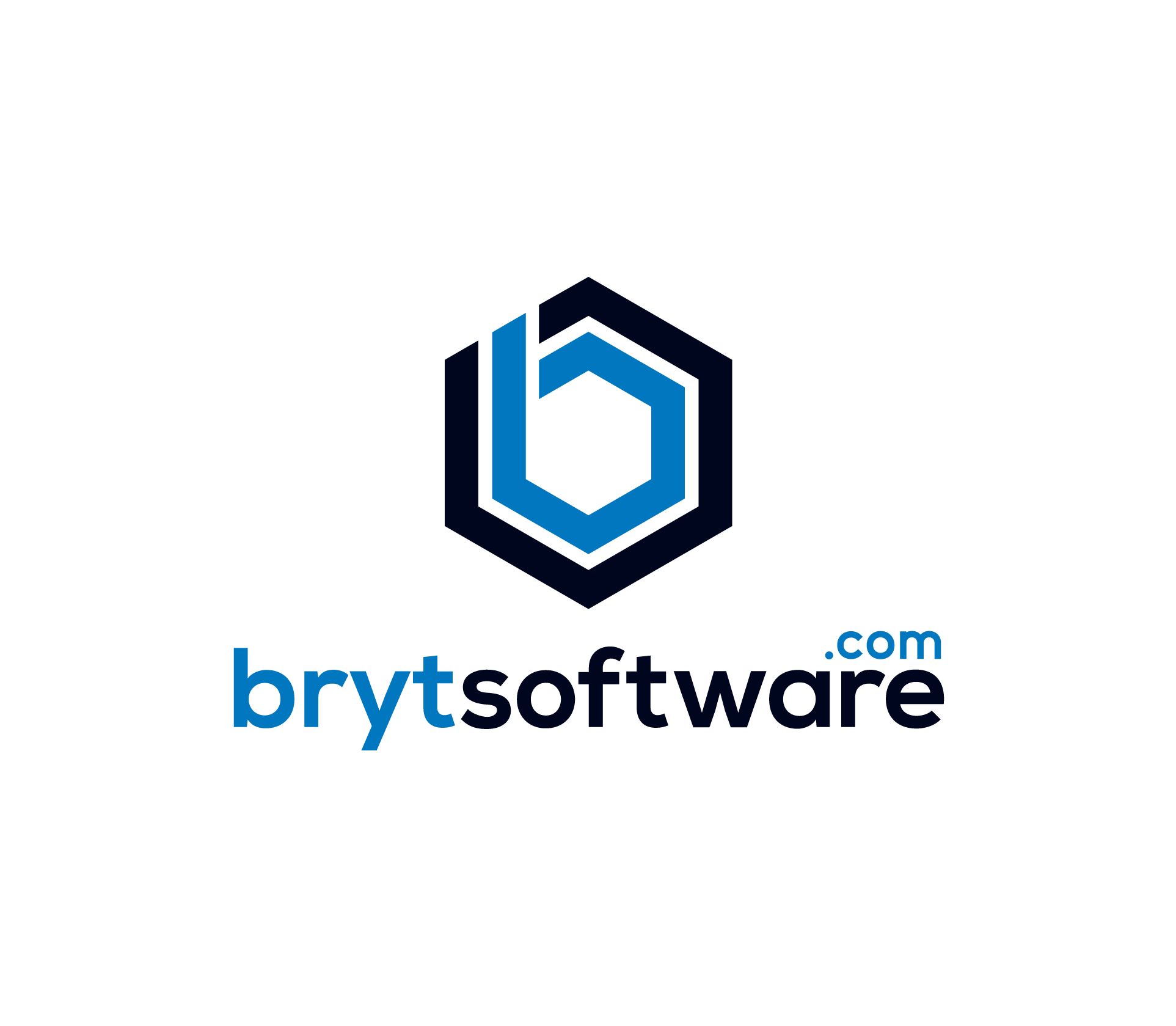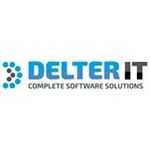What Is Loan Management Software?
Loan management software is an essential tool for financial organizations, including banks, credit unions, and loan firms, to properly manage and track loan procedures. This sort of software automates and streamlines a variety of loan origination, servicing, and collection operations, allowing lenders to increase operational efficiency and client experience.
One of the most important advantages of loan management software is its capacity to manage the full loan lifecycle, from application submission to final payment. This encompasses automated underwriting, credit scoring, loan pricing, document management, and loan disbursement. By eliminating manual errors and improving the loan origination process, this software can significantly cut the time and resources needed to approve and fund loans.
Additionally, loan management software provides extensive service features such as borrower administration, payment processing, and escrow management to assist lenders in properly managing and tracking loan payments and collections. This includes sending automated payment reminders, generating reports, and dealing with overdue accounts, all of which contribute to a more convenient and efficient loan servicing experience for both the lender and the borrower.
Furthermore, loan management software frequently interfaces with credit reporting agencies and other industry-specific technologies, giving lenders a complete picture of their customers' credit histories and financial profiles. This enables lenders to make more informed judgments about loan approvals and pricing, thereby minimizing their risk exposure.
Overall, loan management software provides various benefits to lenders, such as increased productivity, fewer errors, and a better borrower experience. When choosing loan management software, it is critical to examine your individual requirements and select a system that provides the required features and connectors to effectively support your lending operations.
What Are The Recent Trends In Loan Management Software?
Loan management software has become increasingly popular in recent years, as financial institutions and lenders seek to streamline their procedures and deliver more efficient services to their consumers. With the ever-changing technological landscape, loan management software has undergone tremendous improvement to meet the changing needs of the industry.
When thinking about investing in debt management software, you should be aware of the following significant trends:
1.Cloud-Based Solutions: With the growth of cloud computing, many loan management software vendors are now providing cloud-based services. This enables quick accessibility, global cooperation, and improved data security.
2. Automated Processes: Automation has become a buzzword in the banking business, and loan management software is no exception. From loan origination to underwriting and payment processing, automation significantly decreases the risk of human error while also speeding up the lending process.
3. Mobile Compatibility: As consumers' reliance on mobile devices grows, loan management software becomes more mobile-friendly. This offers for greater flexibility and simplicity in managing loans from any place.
4. Data Analytics: Data analytics has revolutionized loan management software. By leveraging data, lenders may make better judgments, discover trends, and improve overall portfolio performance.
5. Integration With Third-Party Platforms: To increase efficiency, several loan management software vendors now enable integration with third-party platforms such as credit scoring, accounting, and human resource systems. This lowers the need for human data entry and allows information to flow more smoothly.
6. Improved Security Measures: With the rise of cyber dangers, loan management software vendors are continually updating their security procedures to secure sensitive data. Most software today includes advanced encryption and security measures as standard features.
7. Customization Options: Every lender has distinct requirements, and loan management software suppliers are now providing bespoke solutions to meet these demands. This enables a more specialized and individualized experience for each client.
Benefits Of Using Loan Management Software
debt management software is a versatile solution created primarily to expedite and simplify the difficult process of debt administration. It is a comprehensive solution that enables financial institutions, banks, and other lending companies to better manage loan portfolios, decrease manual operations, and keep accurate records.
If you're thinking about investing in debt management software, here are some of the main advantages you may expect:
1. Automates Loan Processing: One of the primary benefits of employing loan management software is that it streamlines the entire loan processing operation. This means that arduous and time-consuming procedures like loan application, verification, underwriting, and approval can be completed swiftly and precisely. Automating these processes allows financial organizations to drastically reduce the time and effort required to process loans, enhancing efficiency and production.
2. Improved Data Accuracy: Loan management software stores all loan applications, borrower information, and loan terms in a consolidated system. This eliminates the need for human data entry, lowering the risk of errors or duplication. Financial institutions can make educated judgments and reduce the risk of errors, fraud, or compliance violations when they have easy access to correct and up-to-date information.
3. Improved Customer Experience: The loan management software has tools that allow borrowers to easily apply for loans, track their application status, and make payments online. This not only enhances the overall client experience, but also enables financial institutions to serve a wider customer base without expanding their workforce.
4. Real-Time Reporting And Analytics: Another key advantage of employing loan management software is the ability to generate real-time reports and analytics. This means that financial institutions can get real-time information about loan performance, borrower trends, and other crucial parameters. This information can subsequently be used to make data-driven decisions and streamline the lending process.
5. Cost Savings: By automating loan processing and reducing manual procedures, loan management software can help financial organizations save time, money, and improve efficiency. It also reduces the need for paper-based operations, resulting in lower printing and storage expenses. Furthermore, with precise data and real-time reporting, financial institutions may detect and reduce hazards before they become costly issues.
6. Compliance And Security: Loan management software helps you comply with requirements including the Fair Credit Reporting Act (FCRA) and data privacy laws. It also offers a secure platform to safeguard important borrower information from unwanted access or cyber threats.
Important Factors To Consider While Purchasing Loan Management Software?
When considering investing in loan management software for your business, several essential elements must be considered to establish its effectiveness and fit for your specific requirements.
Here are some key considerations to keep in mind as you consider your options:
1. Customization And Scalability: The software you select should be easily adaptable to your specific business procedures. It should also be able to scale as your company grows, with no additional expenditures or inconveniences.
2. Integration Capabilities: Your loan management software should be able to work seamlessly with other critical systems and software in your organization, such as accounting or CRM platforms. This will allow for smooth data transfer and efficient procedures.
3. Usability: The software's interface should be user-friendly, with intuitive navigation and simple functionality. This will help you save time, money, and irritation while training and onboarding new staff.
4. Automation And Workflow Management: The ideal loan management software should simplify loan processing and automate tedious operations like data entry and document management. It should also have workflow management tools, allowing you to track progress and identify bottlenecks in your loan process.
5. Reporting And Analytics: Thorough reporting and analytics are essential for making sound decisions and identifying areas for improvement. Look for software that has detailed reporting and analytics dashboards to help you measure performance and discover patterns.
6. Security And Compliance: Because loan data is extremely sensitive, your program must have strong security capabilities to defend against cyber threats. It should also follow industry legislation and compliance requirements, such GDPR and CCPA.
7. Customer Assistance And Training: Make sure the software provider provides consistent technical assistance as well as training and troubleshooting resources. This will allow you to increase the efficiency and efficacy of your loan management software.
8. Cost Effectiveness: While budget is an important concern, it is critical to assess the software's long-term benefits and ROI rather than just the initial cost. Look for features that will save you time and resources, such as automation and integration capabilities, when determining the software's total value. By considering these elements and thoroughly assessing your alternatives, you can select the best loan management software to fulfill your present and future demands while also contributing to your company's growth and success.
What Are The Key Features To Look For In Loan Management Software?
Loan management software is an effective tool for streamlining the loan management process and increasing the overall productivity of your firm. With so many options on the market, it might be difficult to find the best software for your individual requirements.
To help you make an informed purchasing decision, we've developed a list of critical features to look for in loan management software.
1. User-Friendly Interface: One of the most significant considerations is the user experience. The software's interface should be basic and easy to explore and understand. This will make it easier for your staff to use the product and shorten its learning curve.
2. Customizable Workflows: Each firm has its own distinct loan management method. Look for software that allows you to tailor workflows to your individual needs. This will allow you to personalize the program to your own company operations, increasing productivity.
3. Automation Capabilities: Loan management requires a large number of repeated processes, such as data entry and document generation. Look for tools that can automate manual activities, freeing up your team's time to focus on more critical responsibilities.
4. Real-Time Data And Analytics: A decent loan management software should have real-time data and analytics to assist you in making informed decisions. This will provide you a comprehensive picture of your company's performance and allow you to pinpoint areas for development.
5. Security And Compliance: Working with sensitive financial information necessitates strong security measures to protect your data and your clients' data. Make sure the software you purchase has built-in security features and complies with industry standards.
6. Integration With Other Systems: Loan management software should not be used in isolation. Look for software that integrates effortlessly with other systems, such as accounting and CRM software, to ensure a smooth flow of data and procedures.
7. Communication And Collaboration Tools: Effective communication and collaboration are critical components of a successful loan management process. Look for software that has communication and collaboration tools like task management, document sharing, and chat options to help your team communicate more effectively.
8. Customizable Reporting: Reporting is an important part of loan management. Look for software that lets you create bespoke reports to obtain insight into your company's performance and track critical data.
9. Customer Assistance: Having effective customer service is critical when dealing with technological issues or questions. Make sure to find a software provider that provides dependable and timely customer assistance to assist you in resolving any issues promptly.
Why Do Businesses Need Loan Management Software?
Businesses use loan management software for a number of reasons. First and foremost, it streamlines and automates the loan management and tracking process. This saves time and resources while lowering the likelihood of errors and discrepancies. Loan management software also helps firms keep organized by storing all loan information in a single area. This includes information like loan conditions, interest rates, payment schedules, and more.
This makes it easy for businesses to maintain and monitor their loans, resulting in regular payments and avoiding late fees and penalties. One of the primary advantages of loan management software is its reporting and analyzing capabilities. This application enables organizations to generate unique reports and obtain insights into their lending activities, allowing them to make data-driven decisions to optimize their loan portfolio.
Additionally, loan management software has security safeguards to protect sensitive loan data. This gives businesses piece of mind knowing that their sensitive financial information is secure. Another benefit of adopting debt management software is its scalability. As a company expands and its loan volume increases, this software can adjust to meet changing needs and demands. It also works with other systems, such as accounting software, to provide a more streamlined financial management process.
How Much Time Is Required To Implement Loan Management Software?
The time required to install loan management software varies according to a number of criteria. These characteristics include software complexity, organizational size and structure, and the level of customization required. The average installation time for debt management software is 3 to 6 months. This includes the time spent selecting and purchasing the software, configuring it to meet your specific requirements, and training your team on how to use it efficiently.
The initial setup and configuration of the software may take up to two months, depending on the complexity of your organization's loan operations. This includes establishing user permissions, defining loan products and interest rates, and connecting the program with your current systems. The training time for your team might last up to four weeks, depending on the size and experience of your crew.
This includes learning the ins and outs of the software, as well as the best ways to use it efficiently. It's crucial to remember that, while the implementation process may appear lengthy, taking the time to properly set up and train your team on the loan management software can result in long-term benefits such as enhanced efficiency and accuracy in loan processing. It is also important considering the software's continuing support and maintenance requirements, which may have an impact on the entire deployment schedule. Make sure to discuss this with your software provider to guarantee a smooth and effective rollout.
What Is The Level Of Customization Available In Loan Management Software?
Loan management software includes a variety of features and functionalities to help ease the loan management process. However, each organization has its own set of wants and requirements, which is where loan management software customization comes in. Loan management software offers varying levels of customization. Some software provides simple customization capabilities, but others offer extensive and highly adjustable functionality.
At a basic level, loan management software allows customers to personalize the interface by rearranging the layout, selecting color schemes, and including logos and branding features. This allows organizations to have a more personalized and professional look and feel for their software. Moving on to higher levels of customisation, loan management software allows users to modify procedures and processes to their individual business requirements.
This involves tailoring approval processes, developing distinct loan products, establishing bespoke fields and data points, and automating actions based on user-defined rules. Furthermore, some loan management software enables users to generate bespoke reports and dashboards for analyzing and tracking loan performance and important parameters. This enables firms to make data-driven decisions and uncover opportunities for development.
Some sophisticated loan management software also offers API access, allowing organizations to combine it with their existing tools and systems. This allows for seamless data transfer and increases the overall efficiency of loan management activities. Before investing in loan management software, it is critical to understand the level of customisation provided by the product. Consider your business demands and select software that offers the appropriate level of customization to suit them.
Which Industries Can Benefit The Most From Loan Management Software?
Loan Management Software is an invaluable resource for a variety of businesses, including financial institutions, lending organizations, and even government agencies. This program enables organizations to speed loan processing and management, making it a vital tool for those seeking to increase efficiency and revenues.
We will look at which sectors can gain the most from deploying Loan Management Software.
1. Banking And Financial Services Industry: The banking and financial services industry handles a huge number of loans and mortgages, making it a key user of Loan Management Software. This industry can greatly benefit from this software since it simplifies loan processing and management, reduces human error, allows for quick decision-making, and delivers real-time loan status information. Loan Management Software enables organizations in this field to save time and resources, enhance productivity, and provide better customer service.
2. Small And Medium Enterprises (SMEs): Loan Management Software is designed for small and medium-sized businesses who need credit to run their operations. Loan management might be difficult for these businesses due to limited resources and staff. This program enables SMEs to streamline their loan application process, obtain accurate and up-to-date loan information, and make data-driven decisions. This enables these organizations to better utilize their resources, enhance cash flow, and expand their operations without encountering any administrative challenges.
3. Credit Unions And Non-Banking: Financial Institutions (NBFCs). Credit unions and NBFCs have a huge number of members or clients, and maintaining their loan portfolios manually can be difficult and time-consuming. This is when Loan Management Software comes in useful. It automates the entire loan management process, including application, approval, disbursement, and servicing. Credit unions and non-bank financial institutions can use this software to improve loan portfolio performance, reduce operational expenses, and increase member or client satisfaction.
4. Mortgage Lenders: For mortgage lenders, Loan Management Software is a game changer. This program enables them to efficiently handle the full mortgage lending cycle, including origination, underwriting, closing, and loan servicing. It also offers analytical insights, risk assessment tools, and configurable reporting capabilities to help mortgage lenders make informed decisions and reduce risks. Mortgage lenders can use Loan Management Software to speed up loan processing, decrease errors, and improve the borrower experience.
5. Government Agencies: Loan Management Software is also useful for government entities that offer financial aid to residents, such as education and housing loans. This software enables government entities to conveniently track loan applications, disburse funds, and check repayment status. It also includes full reporting features to improve governance and audit compliance. Loan Management Software can help government organizations administer their loan programs more efficiently and offer financial aid to residents on schedule.
Overall, Loan Management Software is a versatile tool that can help a variety of industries, including banking, small and medium-sized enterprises, credit unions, mortgage lenders, and government agencies. By automating loan management processes, lowering operating expenses, and boosting decision-making, this software positions organizations for success in today's ever-changing financial environment. Consider your business's needs, budget, and desired features when selecting the best Loan Management Software to help you take your company to the next level.
Conclusion
Finally, selecting the correct loan management software is critical to the success of your organization. You may make an informed decision by taking into account important elements such as your company's specialized needs, budget, and the features provided by various software solutions. Remember to conduct extensive research and comparisons, read reviews, and take advantage of free trials to determine the best fit for your firm.
Investing in a dependable and effective loan management software will help you streamline loan processing, improve client happiness, and eventually increase your profits. With features such as automated workflows, customer portals, and real-time data tracking, you can effectively manage your loan portfolio while also providing an amazing borrower experience.
It is also crucial to note that the loan management software business is continually growing, with new technologies and features being offered on a regular basis. As a result, choosing software that provides frequent upgrades and strong customer service is critical to ensuring that your system remains current and fits your changing company demands.
By following the advice and guidelines mentioned in this buyer's guide, you will be able to confidently choose the best loan management software to streamline your lending operations and boost business growth. Remember that investing in the correct software solution ensures your company's long-term success. So take the time to properly consider your options and make an informed conclusion. Thank you for reading this buyer's guide; we hope it provided useful information and assisted you in your search for the best loan management software.






















